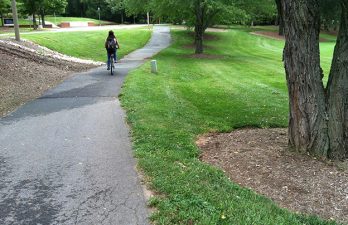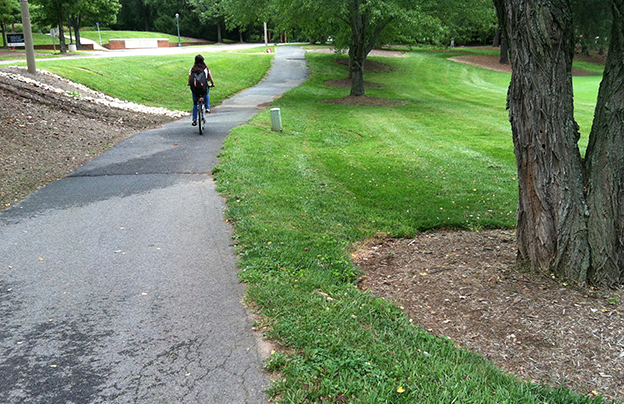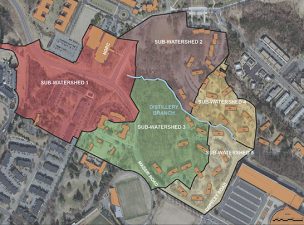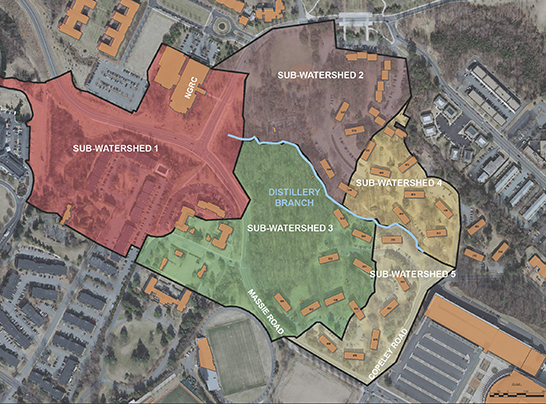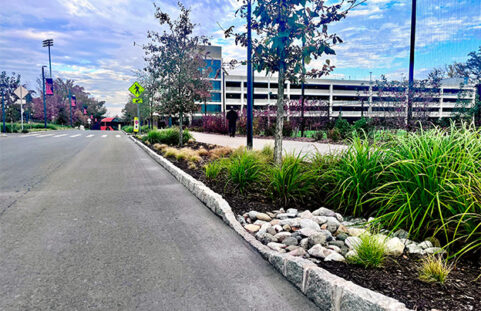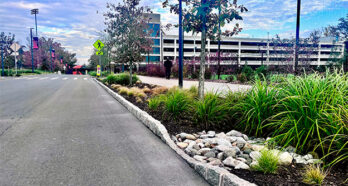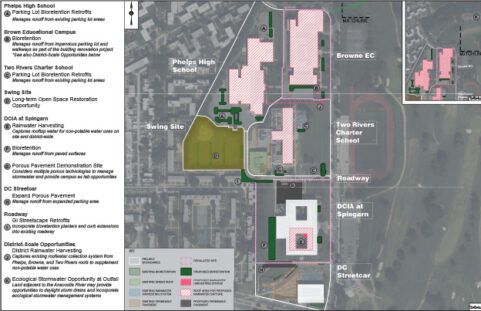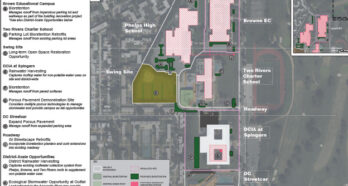Following a collapsed culvert where the Distillery Branch passes beneath Copeley Road near the Copeley Apartments, Nitsch performed a two-phased study at the University of Virginia’s Distillery Branch sub-watershed. The study resulted in the immediate repair at the collapsed culvert, as well as a larger series of watershed scale improvements to target the true root of the problem – urban stormwater runoff. By addressing the water quality and volume issues in the larger watershed to alleviate the stressed stream conditions, Nitsch’s approach provided an opportunity for the University to contribute to their Municipal Separate Storm Sewer System (MS4) stormwater compliance requirements by reducing sediment and nutrient discharges.
The feasibility phase of the study helped the University to determine the appropriate corrective action for the collapsed culvert. We confirmed the collapsed culvert was under capacity for accepting the current flows. As a result, Nitsch recommended the University focus on upstream green infrastructure retrofits to help relieve the rapid, urban storm flow impairing the stream and to take a pro-active approach to preventing issues such as the culvert collapse.
The second phase of the study identified upstream projects to address rapid, high-volume flow in Distillery Branch (and, in turn, reduce the surcharge condition at the Copeley Road culvert). During this phase, Nitsch performed hydrologic modeling using Stormwater Management Model (SWMM) and water quality calculations to evaluate the effectiveness of various green infrastructure retrofits to reduce direct runoff and sediment and nutrient discharges to the stream.
Working closely with the University’s landscape architects, Nitsch explored retrofits that could be tied to other planning projects in the watershed. We prepared conceptual designs for 10 green infrastructure retrofit projects, such as infiltration and bioretention systems, to slow, cool, filter, evaporate, infiltrate stormwater. In addition to the hydrologic and water quality modeling, we also performed order of magnitude cost estimates for each strategy.
Finally, Nitsch prepared a comprehensive matrix and ranking system to help the University prioritize the most effective strategies for alleviating existing issues and supporting compliance with long-term nutrient reduction requirements under the University’s MS4 permit. For each green infrastructure retrofit, the matrix compares impervious area treated, volume reductions, nutrient reductions, and cost. The matrix is currently being used by the University as part of their decision-making process for near-term implementation.
Key Collaborators
Owner: University of Virginia

